- 한국어
- English
- 日本語
- 中文
- العربية
- Español
- Français
- Deutsch
- Pусский
- Tiếng Việt
- Indonesian
By Honorary Reporter Rosemarie Ann Cuevas from Philippines
Photos = Rosemarie Ann Cuevas
The final day of this year's Hanbok Expo on Aug. 12 at Dongdaemun Design Plaza in Seoul left lasting impressions of the traditional attire's elegance and modern versatility. Organized by the Ministry of Culture, Sports and Tourism and Korea Craft & Design Foundation, this year's event was the largest in its history.
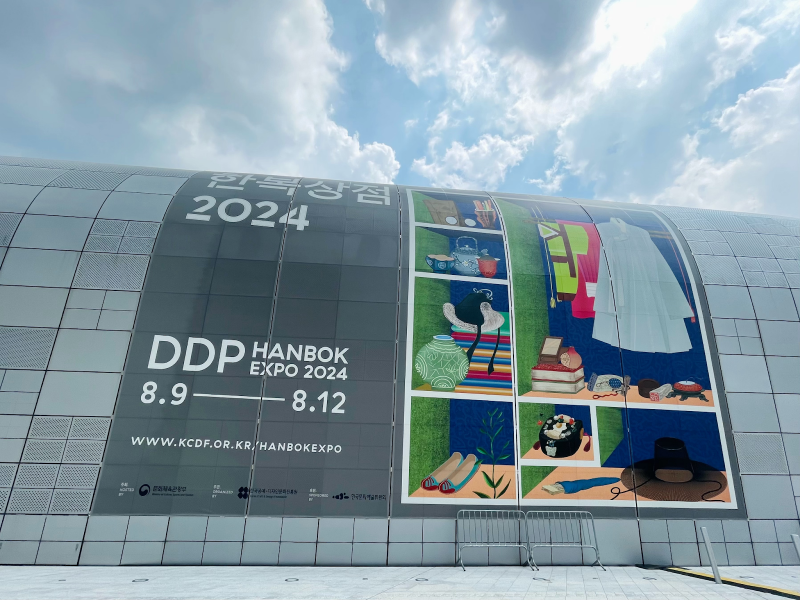
The banner for the Hanbok Expo is displayed on the wall of Dongdaemun Design Plaza.
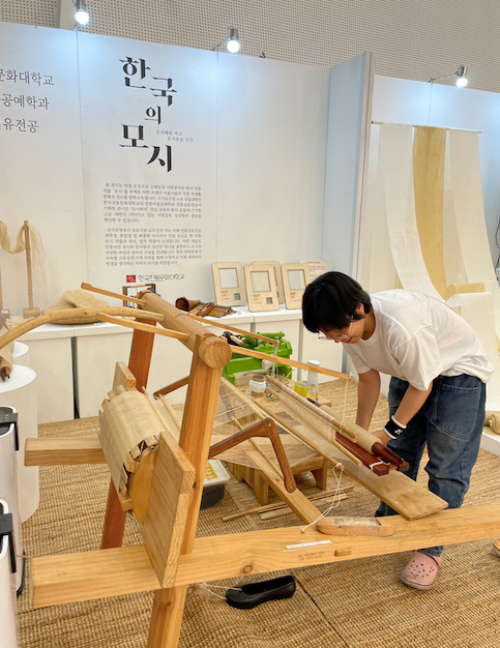
This is a reenactment of traditional hemp weaving known as sambe.
Also featured was a reenactment of Korean traditional hemp weaving, known as sambe, showcasing the intricate techniques of this historic craft.
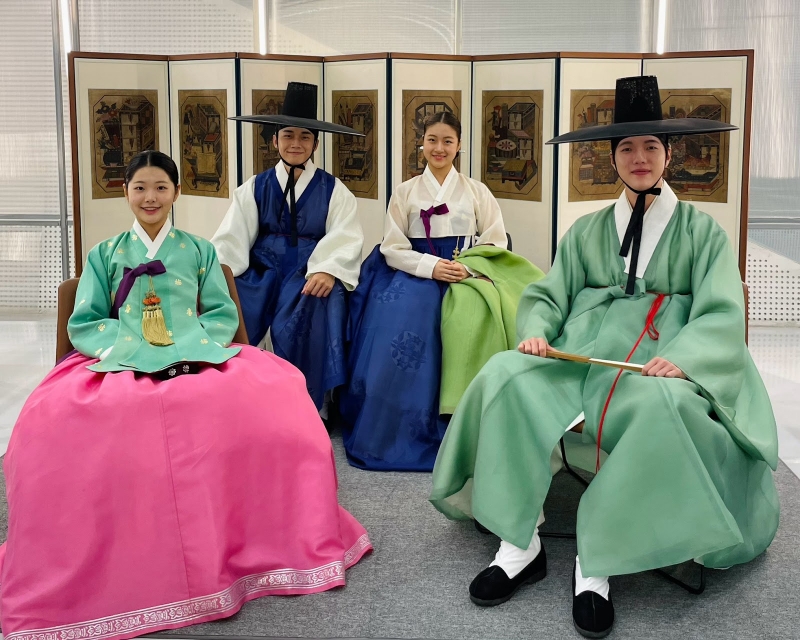
The Arumjigi Foundation presented Hanbok with models to pass on the beauty of traditional culture.
I also enjoyed Special Exhibition Hall I, where the Arumjigi Foundation presented rare costumes from Korea's historical periods to stress the timeless appeal of Hanbok.
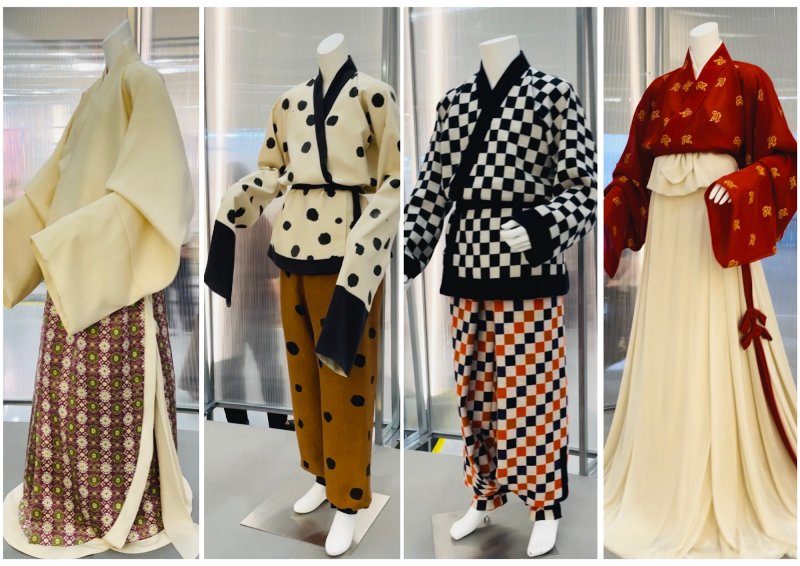
From left to right are four Hanbok designs by the culture think tank Onjium. Kim Jeongah's outfit (far left) uses silk in a cream jeogori (upper garment) and flower-patterned chima (skirt) inspired by designs from the Goryeo Dynasty; Jeong Eunmi's design (second from left) incorporates silk and dotted baji (pants) inspired by the Muyongchong tomb mural; Lee Kyungsun's work (second from right) uses wool and plaid baji inspired by the Dongam-ri tomb mural; and Lee's other work (far right) features a red jeogori and cream chima made of silk inspired by Goryeo.
Meanwhile, Special Exhibition Hall II curated by culture think tank Onjium showcased modernized Hanbok fabrics designed for practicality and functionality, blending traditional weaving methods with contemporary needs.
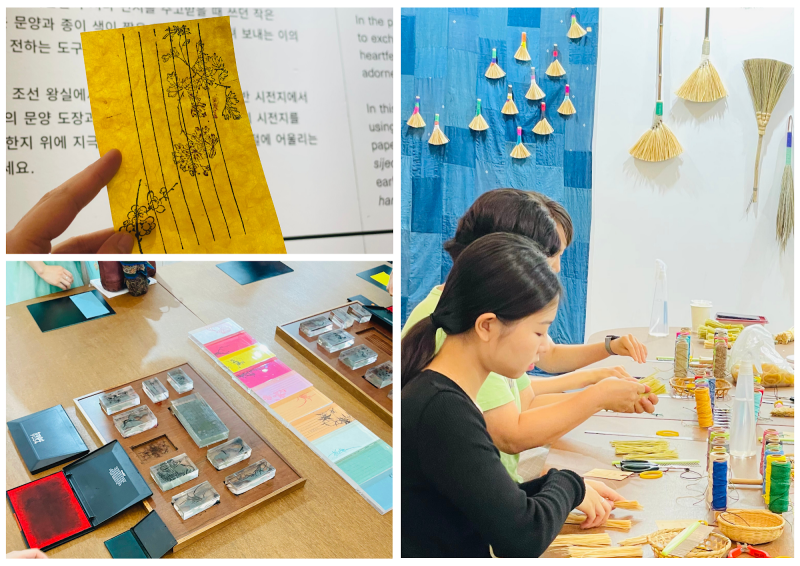 Interactive activities at the expo included making personalized designs on Hanji and crafting brooms with mosi (ramie) fabric.
Interactive activities at the expo included making personalized designs on Hanji and crafting brooms with mosi (ramie) fabric.
In addition to the visual feast, the expo had an interactive zone for people to make their own mosi (ramie) brooms and create designs on Hanji, which I did using branch and flower stamps.
The expo also offered discounts of up to 80% on products like traditional and casual Hanbok, accessories and even Hanbok for pets. Gifts like traditional fabric bookmarks and flower-adorned coasters were also given.
msjeon22@korea.kr
*This article is written by a Korea.net Honorary Reporter. Our group of Honorary Reporters are from all around the world, and they share with Korea.net their love and passion for all things Korean.
